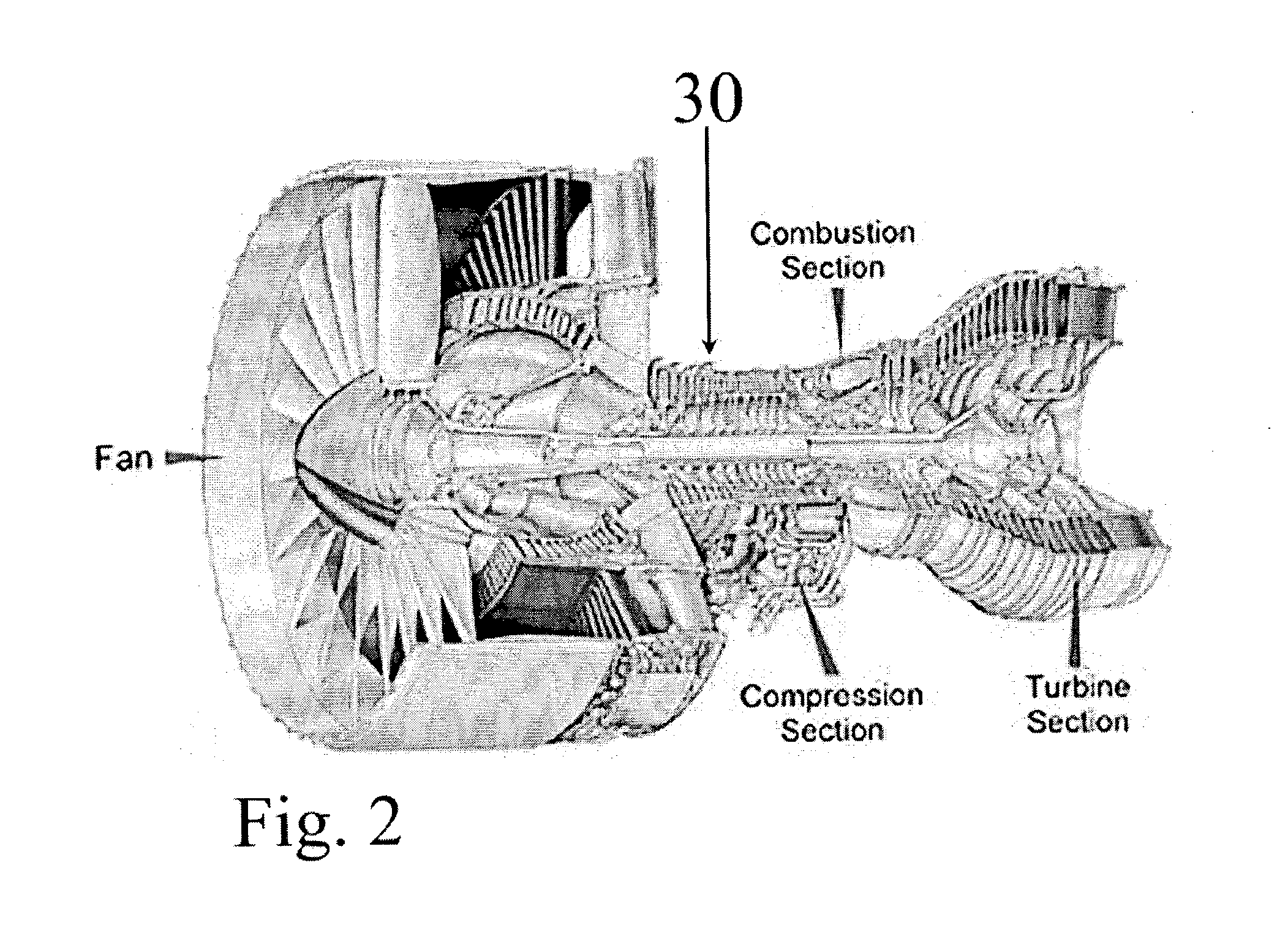Centrifugal casting of titanium alloys with improved surface quality, structural integrity and mechanical properties in isotropic graphite molds under vacuum
a technology of titanium alloys and vacuum casting, which is applied in the direction of foundation moulding equipment, rope railways, ways, etc., can solve the problems of limiting the widespread use of titanium alloy components, high cost of fabricating titanium alloy components, and high cost of titanium components, so as to enhance the non-reactivity of the mold surface, high purity, and high density
- Summary
- Abstract
- Description
- Claims
- Application Information
AI Technical Summary
Benefits of technology
Problems solved by technology
Method used
Image
Examples
example 2
[0161] Using the centrifuge casting method in accordance with the scope of the present invention, titanium alloys listed in Tables 3 and 4 are fabricated as castings of intricate shapes and thin walls. This technique is capable of producing castings with thin walls ranging between 0.05 to 0.1 inch in thickness. The modular molds with machined cavity assembled with stationary and removable cores as per FIG. 11 are positioned along the perimeter of a turn table and are rotated at speeds between 100-1000 RPM. The molten metal of a titanium alloy is introduced into the downsprue and is forced towards the mold cavities via the runners under the action of the centrifugal force mold cavities through the runners. The castings are produced with high surface quality free from alpha casing and casting defects.
example 3
[0162] Using the centrifuge casting method in accordance with the scope of the present invention, titanium alloys listed in Tables 3 and 4 are fabricated as castings of intricate shapes and thin walls. The modular molds with machined cavity assembled with stationary and removable cores as per FIG. 15 are positioned along the perimeter of a turn table and are rotated at speeds between 100-1000 RPM. The molten metal of a titanium alloy is introduced into the downsprue and is forced towards the mold cavities via the runners under the action of the centrifugal force mold cavities through the runners.
[0163] Using a mechanism provided into the apparatus, the split halves of the modular mold assembly are made to open along the parting line while still under vacuum within a very short time after the completion of pouring of the melt and when the melt has completely solidified to 100-200C below the solidus temperatures of the alloys and when the casting has not yet underwent any measurable s...
example 4
[0164] Using the centrifuge casting method in accordance with the scope of the present invention, titanium alloys listed in Tables 3 and 4 are fabricated as castings of intricate shapes and thin walls. The modular molds with machined cavity are assembled with stationary thin and hollow cores as shown in FIG. 22. The cores are embedded into the main mold cavities. The molds are positioned along the perimeter of a turn table and are rotated at speeds between 100-1000 RPM. The molten metal of a titanium alloy is introduced into the downsprue and is forced towards the mold cavities via the runners under the action of the centrifugal force mold cavities through the runners. During solidification as the casting shrinks around the stationary hollow cores, the compressive stresses generated due to shrinkage crush the cores and the residual stresses are relieved to prevent crack formation in the casting. After the casting reaches ambient temperature, it is removed from the vacuum chamber. Th...
PUM
| Property | Measurement | Unit |
|---|---|---|
| Grain size | aaaaa | aaaaa |
| Grain size | aaaaa | aaaaa |
| Length | aaaaa | aaaaa |
Abstract
Description
Claims
Application Information
 Login to View More
Login to View More - R&D
- Intellectual Property
- Life Sciences
- Materials
- Tech Scout
- Unparalleled Data Quality
- Higher Quality Content
- 60% Fewer Hallucinations
Browse by: Latest US Patents, China's latest patents, Technical Efficacy Thesaurus, Application Domain, Technology Topic, Popular Technical Reports.
© 2025 PatSnap. All rights reserved.Legal|Privacy policy|Modern Slavery Act Transparency Statement|Sitemap|About US| Contact US: help@patsnap.com



